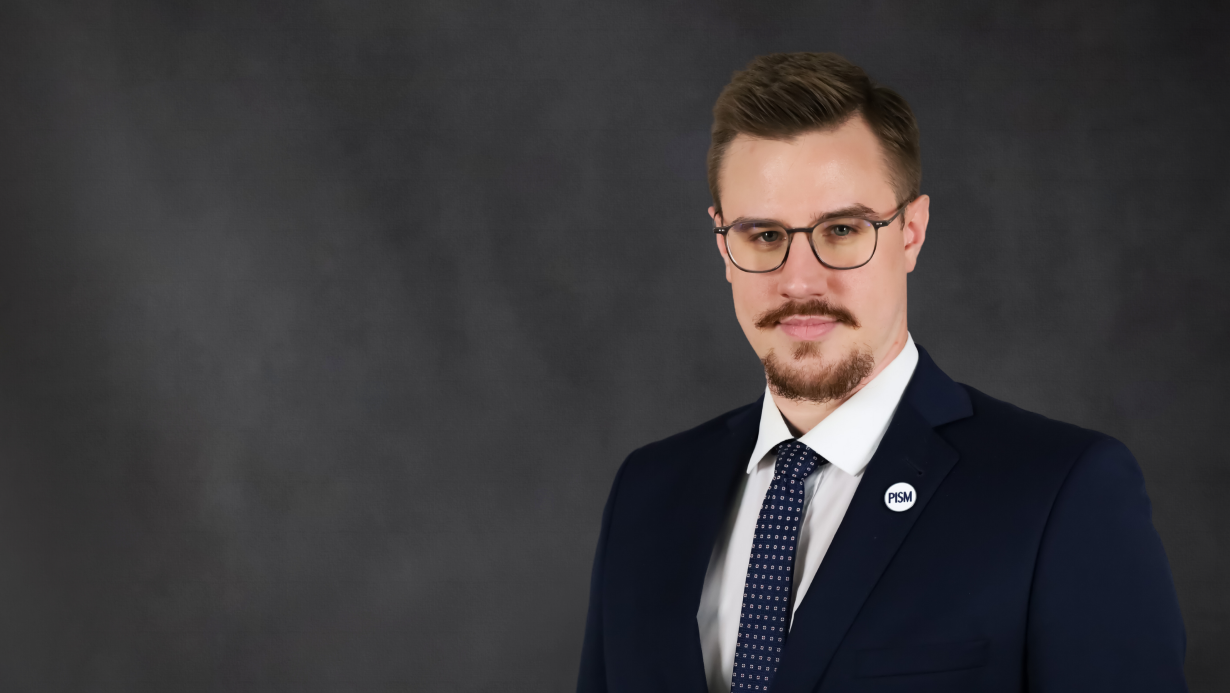Trump Unveils Negotiations with Russia on Ukraine
The 26th meeting of the Ukraine Defense Contact Group was held in Brussels on 12 February, with Defense Secretary Pete Hegseth representing the United States. During the meeting, he presented the US. approach towards Ukraine. On the same day, U.S. President Donald Trump announced that he had spoken by phone with Russian President Vladimir Putin, followed by Ukrainian President Volodymyr Zelensky. These events indicate the advancement of talks aimed at ending the war and are a prelude to formal negotiations involving Russia and Ukraine.
.jpg) Pool/ABACA/Abaca Press/Forum
Pool/ABACA/Abaca Press/Forum
What has the U.S. defence secretary signalled about Ukraine?
Hegseth’s speech indicates that the U.S. administration sees no chance of Ukraine winning on the battlefield and is therefore seeking a quick end to the war through negotiations. In a break with the policy pursued by the Biden administration, the defence secretary openly declared that the U.S. does not see Ukraine’s NATO membership and a return to Ukraine’s borders before Russia’s 2014 invasion (control over Crimea and the Donetsk and Luhansk regions) as a possible part of a negotiated agreement. The declaration represents a softening of the U.S. negotiating position, which may indicate the Trump administration’s overwhelming interest in getting a deal done rather than the details. At the same time, Hegseth confirmed that possible security guarantees and peacekeeping operations do not mean the U.S. will send troops to Ukraine.
What does Hegseth think the role of European states should be?
The defence chief pointed to European and other countries as taking the lead in a possible peacekeeping operation in Ukraine. Because it would be conducted outside the Alliance, therefore Article 5 of the Washington Treaty on the commitment of allies to mutual defence would not apply to the troops involved. Most likely, it also would not be a UN operation, given the membership of China and Russia on the Security Council, but instead a “coalition of the willing”. The defence secretary called on European countries to increase the pressure on Russia by producing more energy, which is expected to result in lower prices. He noted that given the U.S. priority on the rivalry with China and competition over key interests in the Indo-Pacific, the United States cannot continue to be focused on ensuring the security of Europe. Therefore, he called on European countries to take the lead by significantly raising defence spending to Trump’s proposed minimum of 5% of GDP, increasing conventional deterrence and defence capabilities, strengthening the European arms industry, and increasing their commitment to short- and long-term military support for Ukraine.
What was the purpose of Trump’s conversations with Putin and Zelensky?
The phone calls were most likely the final element of introductory arrangements for negotiations to end the war. Trump declared a broad context for the talks with Putin, including the situation in the Middle East and economic issues. Reporting on the conversation, he pointed to the sacrifices made by the U.S. and Russia during World War II, referenced Putin’s mention of Trump’s election call for “common sense” on the matter, and declared an exchange of visits by the leaders to Moscow and Washington. The call does not necessarily mean Trump is being submissive to Russia and Putin, but rather was a display of his approach to authoritarian leaders in talks with them. The communiqué following the conversation with Zelensky focused on the war and the upcoming meeting on 14 February between the Ukrainian leader and Vice President J.D. Vance and Secretary of State Marco Rubio at the Munich Security Conference. They will most likely discuss the U.S.-Russia talks and try to align Ukraine’s position with it. The U.S. wants fundamental negotiations to begin quickly, as indicated by Trump’s expressed hope for positive results from the meeting.
What form are the U.S. negotiations with Russia and Ukraine likely to have?
Trump announced that the negotiations are to be led by Rubio, CIA Director John Ratcliffe, National Security Advisor Mike Waltz, and Ambassador Steve Witkoff, the president’s special envoy for the Middle East, who in earlier days led talks to release an American teacher imprisoned in Russia. The president not naming Keith Kellogg, special envoy for Russian-Ukrainian negotiations, casts doubt on his position in the administration. It is likely that the U.S. will continue to hold two-track talks, first with Russia and then with Ukraine. Asked at a press conference whether Ukraine is an “equal partner” in the negotiating process, Trump refused to give a clear answer but blaming it for starting the war. There is concern that the arrangements will be determined between Trump’s and Putin’s teams, with the Zelensky administration forced to adjust its position and make concessions to enable progress in the negotiations.
What, besides ending the war, might be subjects of the negotiations?
The negotiation process in bilateral relations—U.S.-Russia and then U.S.-Ukraine—is likely to concern not only decisions and concessions directly related to the war but also other issues, such as broader European security and NATO involvement or economic benefits for the U.S. The Trump administration may on the one hand be reluctant to significantly roll back sanctions on Russia favourable to U.S. interests, for example, on energy, while, on the other, calling on Ukraine to conclude further arms contracts, trade agreements, and investments for continue support. It is in the interest of European allies to solicit the U.S. authorities not to include in negotiations with Russia broader decisions on the American military presence on the continent. A Russia empowered by the war situation in Ukraine, the talks could signal a weakening of U.S. political resolve and, as a result, encourage Russia in the longer term to test security guarantees given to Ukraine or commitments within NATO.



.png)
.jpg)
.png)